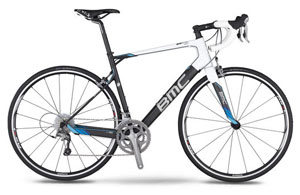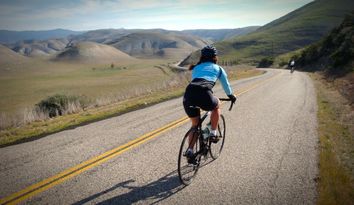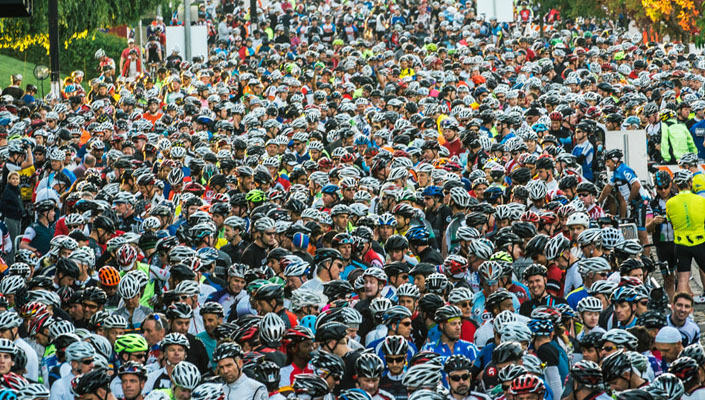Gran Fondo fever is sweeping the cycling globe, and little wonder: these long-distance mass-participation rides are a great way for you and your friends to test yourselves in a friendly, professional environment without the ruthless naked aggression that can sometimes accompany traditional road races.
The common feature in almost all Gran Fondos is distance - they're long and they generally cover some pretty challenging terrain. As Gran Fondo riders are always telling me, "Luck favours the well-prepared", so over the next few weeks I'll be running through some ways to make sure your big ride is as enjoyable and successful as it can possibly be.
If I could only give one piece of advice to somebody riding their first Gran Fondo, it would be "Think and act like you're a Pro". I don't mean you need to try to cross the finish line first, nor do you need the latest equipment or the best tan - instead, think and act as if you can't afford any mistakes or silly problems: plan for every eventuality, from equipment issues to food intake to extreme weather conditions. A professional attitude and attention to detail tends to distinguish riders who are always on top of things from those who always seem to get themselves in trouble.
Your Equipment
There are two ways your equipment can cause you problems on an epic ride: things break down or you forget to bring them.

The second problem is so common it often leaves me scratching my head at people's terrible planning choices. It's actually very simple: write a list, and include everything.
- Bike
- Helmet
- Shoes
...you get the idea. Don't leave anything off your list on the assumption that you'll remember it. Pack your bike/ride bag/kit at least a couple of days before you leave and double-check that you have everything. It may seem like overkill, but it's better to waste a few minutes double-checking you packed your helmet than it is to try to find one you can borrow at the start line on ride day (believe it or not, this happens all the time!).
Sometimes mechanical things just stop working and there's not really much you can do about it. More often than not, though, it is a poorly maintained piece of equipment that goes wrong. Get your bike serviced by an expert mechanic at least a week before your ride; this will give you the opportunity to test-ride it a number of times before you leave and to take it back for further attention if it's not quite right.

Make sure your tires have plenty of wear left in them, and don't fall for the old roadie's trick of having narrow tyres pumped up rock-hard - comfort is paramount in a Gran Fondo and a tire width of 25mm, or even 28mm for rough roads, with 85 - 100psi pressure will get you and your undercarriage to the finish in relative comfort.
Be confident in your gear selection: don't be afraid to use a compact crankset or even a triple front chainring if it's a mountainous course, and bear in mind that as the day wears on those easy gears start to feel harder, so it's good to have some in reserve!
Don't gamble on not getting a flat - take 2 spare tubes, levers, and a pump or CO2 canisters. Many of the larger rides on the calendar, such as the Peaks Challenge series in Australia, have valet bags for food and supplies that are left at feed stations around the course. Take advantage if this is on offer and put an extra tube and CO2 canister in each one. You probably won't need them, but better safe than sorry.
SEE ALSO: What's in the Jersey?
Don't Leave It Too Late
Give yourself time to get things ready - as I already mentioned, get your bike serviced well before the ride, go and buy any spares/levers/tubes you may need and pack a roll of duct tape and some zip-ties (you just never know!). Check that your helmet fits snugly and doesn't have any cracks. Make sure your cleats are not too worn and clip firmly into your pedals.

- DO NOT: Tinker with your bike, saddle height or cleat position on the morning of the ride.
- DO NOT: Try out new equipment on the morning of the ride if you haven't previously tested it.
- DO NOT: Leave it until the morning of the ride to lay out your kit, helmet, spares and water bottles. Do it the night before, and sleep soundly knowing everything is as it should be.
If you plan ahead and deal with potential problems before they arrive - just like the pros do - then the only obstacles you'll face out on the road are what nature throws at you, and they're the fun ones anyway!

RELATED ARTICLE:
Preparing for your first 'Big One' (the 60 mile, 100km bike ride)
When it comes to numbers, nothing seems as daunting as your first 60 mile ride (or in metric terms, 100km). Let's make it easy for our friends worldwide and call it 'The Big One' from now on. It seems reasonably straightforward to... READ MORE



